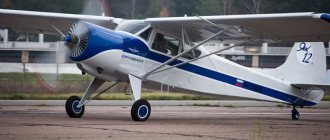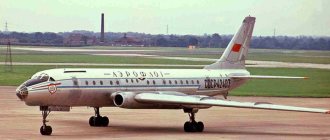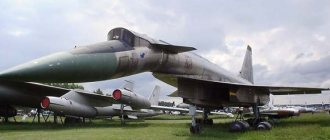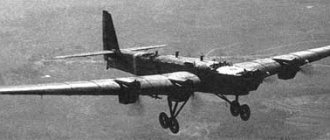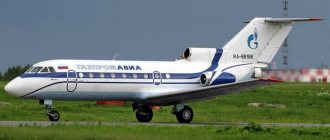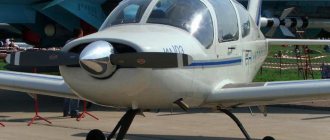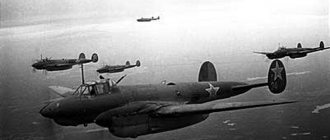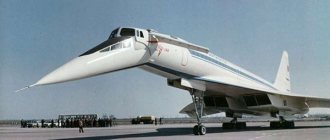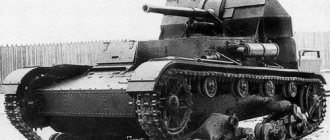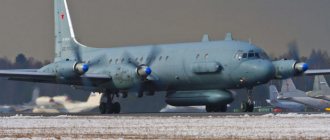TASS DOSSIER. On June 27, 2022, at the airport of Nizhneangarsk (Buryatia), during landing, an An-24RV passenger plane, en route from Ulan-Ude, rolled off the runway, crashed into a wastewater treatment plant and caught fire. Two crew members out of 47 people on board died, and four more were hospitalized.
The editors of TASS-DOSSIER have prepared material about this type of aircraft.
The An-24 (according to NATO codification - Coke) is a turboprop multi-role aircraft for short and medium-haul airlines. Developed in the second half of the 1950s at the experimental design bureau 473 (later the Antonov Design Bureau, now the Antonov state enterprise, Kyiv, Ukraine). The first flight took place on October 20, 1959. Serial production began in 1962. The An-24 made its first regular flight on October 31, 1962 on the route Kyiv - Kherson.
An-24 Engine. Dimensions. Range of flight. Practical ceiling. Story
The active development of domestic aviation began in Soviet times. Then gas turbine engines for aircraft appeared. This prompted the country's leadership to order the Antonov Design Bureau for a new generation military transport aircraft, which was given the name AN-24. However, priority was still given to passenger airliners. The first twin-engine turboprop passenger aircraft, the An-24, was created more than fifty years ago. It was intended to transport people on short-distance domestic routes.
A trace in the history of aviation and culture
The long-term operation and recognition of the An-24 aircraft became the reason for the installation of decommissioned aircraft as monuments in a number of republics of the former USSR. Some of the cars are used as makeshift cafes. The An-24B aircraft installed in the village of Kon-Kolodez (Don highway) is partially “implanted” into the cafe premises. Moreover, the car is painted in Aeroflot colors.
Various modifications of the An-24 appeared in the films “Confrontation” (filmed in 1985), “Taming the Fire” (1972), “24-25 Doesn’t Return” (1968) and many others.
Manufacturers of scale models have not spared the aircraft either. During the Soviet era, a popular aircraft model was produced by VebPlasticart (GDR), complete with colorful decals and paint. Currently, the model has become a rarity.
An-24 aircraft - video
The first flight of the airliner from this series took place 58 years ago. Then, a few years later, it was modernized, turning it into a transport aircraft, which was given the name An-24T. However, its technical and operational characteristics indicated that it was more of a truck than a transport vehicle. Despite this, not even a cargo hatch was provided here, not to mention a loading ramp. Loading and unloading was carried out through hatches intended for passengers. However, in this transport model the floor in the cargo compartment has been noticeably reinforced. Next, a hatch was made on the right side for loading cargo.
A qualitative improvement in the takeoff and flight characteristics of the AN-24 aircraft was noted after it was equipped with a powerful jet engine.
The result was a supersonic aircraft An-24, a photo of which can be seen in the gallery. Despite the successful testing of this model, the management of transport aviation had many complaints and comments. They were interested in why there was no hatch in the tail of the plane for receiving cargo. This was not the only reason that became the impetus for the decision to create a new machine capable of satisfying all the requirements of the country's leadership.
The design of the transport airliner was undertaken by specialists from the Antonov Design Bureau in 1965, then they took the An-24 model as a basis. Thorough testing of the modernized airliner was carried out over two years. Since the vehicle was intended for the military, much attention was paid to the landing of paratroopers. The modernized airliner entered serial production in 1966. Its creation was carried out by specialists from the Irkutsk aircraft manufacturing plant.
This model was produced until 1979. Until this time, over 1200 machines were created. The vast majority of them were collected in Kyiv. Many airline executives became interested in the aircraft's flight qualities, which made the modernized model very popular. The airliner began to be used on almost all domestic flights of the Soviet Union, and this is over 450 destinations. Soon, foreign carriers became interested in the An-24 aircraft and began exporting it to 25 countries.
The first production version was the An-24A airliner. After its modernization, aircraft manufacturing companies began production of the An-24B model. The aircraft's take-off weight has been increased. Until 1970, 400 copies of these machines were produced. The most popular version was the An-24RV model. It was distinguished from its predecessors by the presence of an additional engine, which significantly improved the take-off and flight characteristics of the aircraft.
When designing the aircraft, the designers paid special attention to the reliability and ease of operation of the aircraft. In this regard, duplicate piloting was created here, which allows each pilot to control the aircraft from his own seat. This system is unique because if one remote control fails, the second pilot can take over control of the aircraft. In addition, there is an autopilot system, which greatly facilitates the work of pilots.
The first model was equipped with the most reliable radar equipment of the time. This version of the passenger aircraft could accommodate 50 people and was intended for short-distance flights. These were local airlines. The operational life of the modernized aircraft was increased to 50,000 flight hours, which was considered a good indicator at that time.
Then they released a more comfortable model, however, the number of passenger seats was reduced. If necessary, the An-24 passenger aircraft can be quickly converted into a cargo version. This is done quite quickly, thanks to removable chairs. An important advantage of the aircraft is the ability to land on snow-covered and wet runways. In addition, the aircraft does not require a very long acceleration - 650 meters is enough.
The An-24 aircraft entered serial production in 1962. At the same time, their testing ended, which lasted for two years.
The liner made its first flight with people on board in September of the same year. A month later, Antonov’s planes began flying on the Kyiv-Kherson route. Soon they began to serve the route Moscow - Voronezh - Saratov.
Crash plane
On June 27, 2022, an An-24RV (registration number RA-47366, serial 108-04) rolled out and burned out in Nizhneangarsk. It was manufactured in Kyiv and made its first flight in September 1977. It was in operation for 40 years in 1978-1993, flew as part of the Khabarovsk, then Sakhalin air squads of the Far Eastern Civil Aviation Administration (Aeroflot) under registration number USSR-47366. For about 14 years it was used as a flyer for radio technical landing aids, then it was converted back into a passenger one.
In 1993-2013 he was a member of the aviation fleet. In 2013-2015, work was carried out in Irkutsk to extend the resources and service life of the aircraft. Since 2015 - in the air fleet. The aircraft's airworthiness certificate expired on July 28, 2022.
An-24 cockpit
All models are so reliable and demonstrate high performance characteristics that they are used to perform a variety of secondary tasks. First of all, this is due to the fact that An-24 aircraft do not need very long runways.
Another advantage compared to similar aircraft of this class is increased fuel economy. This is what allows the aircraft to be operated on short routes. Today there are over 40 modifications of such airliners.
Layout of seats in the aircraft cabin
The ATR 72 aircraft and its main characteristics
The hermetic semi-monocoque fuselage includes a passenger compartment, separated from other compartments (crew cabin, luggage compartment, wardrobe, toilet and buffet) by partitions. In the cabin of the AN 24 aircraft there is 1 aisle in the center, separating the left and right rows of seats (2 rows on each side).
AN 24 interior diagram
Important! Passengers traveling with children should take into account the design features of the aircraft in order to choose the most comfortable seats in the cabin.
Description of seats by block of rows
- All technical compartments on the plane are located in the rear section (except for the additional luggage compartment, which is located behind the cockpit), so rear passenger seats are not the best option for flying with children. The smells coming from the kitchen and toilet are most noticeable here. The tail part of the aircraft, moreover, is the most sensitive to the effects of turbulence - vibration is felt more strongly;
- The very last row of seats is not comfortable because their backs are rigidly fixed and do not recline;
- The seats located in the part of the cabin adjacent to the wings (in the diagram these are seats 4 to 8) can also be called an inconvenient option - the noise of the engines will interfere. And a child can quickly get bored with a poor view from the windows;
- You should not choose seats in the cabin directly next to the emergency exits; if you are traveling with a small child, this will cause inconvenience in the event of an emergency;
- The seats in the first row are considered the most comfortable - there is free space in front of the crew cabin where you can place a baby stroller or hang a cradle, if the cabin design allows.
All other seats on board the ship are standard places where you can accommodate preschoolers or teenagers, but for kids they will be uncomfortable. When traveling with children under 2 years old, it is better to book the best seats in the cabin of AN-24 aircraft in advance, since their choice is limited.
Salon An-24
Design Features
Each model is equipped with two turboprop engines with four-blade propellers. Each wing has two fuel tanks, which can be combined into one system if necessary.
The reliability of the design and the power of the engines allows you to fly to your destination even on one engine. The An-24 aircraft meets all controllability requirements that apply to aircraft of this class.
The aircraft body belongs to the category of all-metal monoplanes. It is equipped with twenty portholes. Emergency exits are mandatory. The tail is single-finned with an aerodynamic ridge. The wings are elongated, trapezoidal in shape. They are equipped with spars and flaps. The chassis is equipped with three legs that retract into the body. The fuselage includes the cockpit, followed by a passenger compartment, followed by a luggage compartment, then a buffet and a toilet.
Partitions are provided to separate the passenger compartment from other rooms. Dual aircraft control includes two columns with steering wheels. The flight navigation system, as well as radio equipment, help to carry out flights in any weather conditions and at any time of the day. An airplane can land and take off not only in poor visibility, but also in complete darkness.
Electricity is supplied from two generators installed on the motors. If they fail, the aircraft can receive electricity from two sufficiently capacious batteries. As you know, wings and engine air intakes are more susceptible to icing. Air-thermal systems that reliably resist icing help get rid of this serious problem. In the event of depressurization of the aircraft, all passengers will be saved by oxygen masks located in special compartments above the seats.
Another advantage of these aircraft compared to similar aircraft of this class is increased fuel economy. This is what allows the aircraft to be operated on short routes. Today there are over 40 modifications of such airliners.
The An-24 aircraft is a prototype of the An-26 airliner. The similarity is perfect except for the design of the cargo compartment and the tail section equipped with a ramp. The reliability of the fuselage tightness has been time-tested. The design includes a large number of stringers and beams. Here, instead of rivets, glue-welded joints (electric spot welding) are used. Color photographs of all models are posted in the catalogue.
Modifications
An-24 - The first production version. Produced in 1962.
An-24 "Thread" - An aircraft for researching the natural resources of the Earth and the World Ocean. Manufactured in 1978.
An-24 "Troyanda" - A flying laboratory for testing equipment for searching for submarines. In 1968, 1 An-24T was converted.
An-24A - Passenger version, designed for 44 seats. In 1962-1963, 200 aircraft were manufactured.
An-24B is the main modification of the An-24 for 48-52 passengers with a buffet and a flight attendant's workplace. 400 vehicles were built.
An-24B - Passenger version with increased take-off weight to 21 tons, designed for 48-52 seats. Produced since 1964. 400 aircraft were produced.
An-24V - Export version of the An-24B. Produced since 1964.
An-24LP - Forest firefighter. In 1971, 3 aircraft were converted.
An-24LR "Toros" - Ice reconnaissance aircraft. In 1967, 5 aircraft were manufactured.
An-24PS - Search and rescue based on the An-24T.
An-24PRT - An-24PS variant with simplified equipment.
An-24R - Radio reconnaissance and radio control aircraft.
An-24RV
An-24RV - An-24B (B) variant with a RU-19A-300 auxiliary power unit installed in the right engine nacelle of the theater.
An-24RR - Laboratory aircraft for radiation reconnaissance. In 1967-1968, 4 aircraft were converted.
An-24RT - Military transport with an additional RU-19A-300 engine. In 1969-1971, 62 aircraft were manufactured at the Irkutsk Aviation Plant.
An-24RT (An-24RTR) - Radio repeater aircraft.
The An-24T is a light military transport aircraft based on the An-24V. It differed from the base vehicle in the presence of a cargo hatch in the rear fuselage. Maximum load - 4.6 tons. 165 vehicles built.
An-24T (An-34) - Military transport aircraft based on the An-24B (B). It had a large cargo door on the starboard side in the front part of the fuselage and a door on the left side in the rear section, a cargo hatch in the tail. Developed in 1961-1965. First flight November 16, 1965. In 1967-1971, 164 aircraft were manufactured at the Irkutsk Aviation Plant.
An-24USH - Navigation training version of the An-24. Notable for 5 navigator jobs. In 1970, 7 aircraft were converted.
An-24FK (An-30) - Photo-cartographic version (joint work of the Beriev Design Bureau and the Antonov Design Bureau). In 1975-1980, 115 aircraft were manufactured at the Kiev Aviation Plant.
An-24SHT - Staff version of the An-24. In 1968, 36 aircraft were converted.
An-26 - Military transport aircraft. It is distinguished by the presence of a cargo ramp at the rear of the fuselage, a crane beam and other loading and unloading equipment. In 1968-1986, 1398 aircraft were manufactured.
Xian Y-7 - Chinese version of the An-24RV. First flight December 25, 1970. Between 1984 and 2000, 70 aircraft were manufactured. Deck-based AWACS aircraft based on Y-7 - Flying radar.
Xian MA60 - Upgraded version of the Y-7. Produced since 2000 by Xi'an Aircraft Manufacturing Company.
Specifications
AN-24 aircraft are still in use for flights around the country and in the former republics of the USSR due to their ability to land in any conditions that do not require runway modernization. The car easily lands on uneven ground and is capable of taking off from an icy platform. The technical characteristics of the aircraft allow them to be used in regions with fairly low temperatures (in the Far North).
Airplane A 319: diagram
The main characteristics of AN-24 aircraft are given in the table below.
Technical characteristics of models 24 AN
| Main settings | Indicators |
| Capacity, maximum, persons. | 48-52 |
| Flight range, thousand km | 1,85-3,0 |
| Cruising speed, km/h | 498 |
| Ceiling height, thousand m | 8,4 |
| Take-off weight, maximum, t | 21 |
| Aircraft length, m | 23,5 |
| Aircraft height, m | 8,32 |
| Wingspan, m | 29,2 |
| Wing area, sq. m | 72,5 |
Note! The equipment installed on machines of this type allows you to take off and land in any weather conditions, at any time of the day, and even in poor visibility.
Design of the AN-24 aircraft
Description of design
In fact, the AN 24 model aircraft is a standard high-wing aircraft, where the fuselage has a semi-monocoque structure, supported by beams and stringers. A brief description of the aircraft can be presented as follows:
- In cross-section, the body of the device consists of 2 interconnected arcs of different sections. The entire power structure is assembled using glue-welded joints;
- The wings are responsible for creating the lifting aerodynamic force in the car. In AN-24 models they have a trapezoidal shape with a slight elongation. Throughout the entire wing structure, 2 power elements are used - spars. In the central part of the wing there are deflecting single-slot flaps, and on the consoles there are double-slot retractable and split ailerons;
- The tail section of the hull provides balancing, stability and controllability of the vehicle in flight. The tail consists of a horizontal and vertical stabilizer, trim tab and elevators;
- The tail is combined into a single system with the keel located under the fuselage of the aircraft. The purpose of the keel is to ensure the stability of the apparatus at the sliding angle;
- The AN 24 model aircraft takes off and lands using retractable landing gear, consisting of one front and two main supports. Each of the struts has double wheels, allowing the AN 24 aircraft to land softly even on uneven ground;
- The aircraft use Progress AI-24A turboprop 2-engine engines with a power of 2x2550 hp;
- The turbine-propeller engines are equipped with 4-blade propellers with a diameter of 3.9 m and an autonomous starting unit. Fuel for the engines is stored in soft tanks located in the center section and caissons attached to the middle parts of the wings.
Note! The entire design of the aircraft was clearly thought out; every detail of the hull and tail allows the aircraft to be given normal aerodynamic properties, which is the key to safe movement in the air.
Photo of An-24
Similar
An-24 Engine.
Dimensions. Range of flight. Practical ceiling. History of Tu-154 Speed. Dimensions. Weight. Capacity. Fuel consumption. Story
Yak-40 Engine. Dimensions. Capacity. Range of flight. Practical ceiling. Story
An-2 Engine. Dimensions. Story. Range of flight. Service ceiling
Tu-144 Engine. Dimensions. Range of flight. Practical ceiling. Story
IL-96 Speed. Dimensions. Capacity. Story. Load capacity
IL-62 Engine. Dimensions. Range of flight. Practical ceiling. Story
IL-18 Engine. Dimensions. Range of flight. Practical ceiling. Story
IL-14 Engine. Dimensions. Story. Range of flight. Service ceiling
An-14 Pchelka Speed. Dimensions. Weight. Capacity. Story. Load capacity
An-148 Speed. Price. Dimensions. Story. Capacity. Fuel consumption
Yak-42 Speed. Dimensions. Capacity. Fuel consumption. Story. Range of flight
Tu-114 Speed. Dimensions. Weight. Capacity. Story. Load capacity
Yak-12 Speed. Dimensions. Weight. Story. Capacity. Load capacity
An-3 Engine. Dimensions. Range of flight. Service ceiling
IL-114 Engine. Dimensions. Range of flight. Service ceiling
Yak-52 Engine. Dimensions. Range of flight. Service ceiling
Tu-334 Speed. Dimensions. Weight. Story. Capacity. Range of flight
Tu-134 Speed. Dimensions. Capacity. Fuel consumption. Story. Range of flight
IL-86 Engine. Dimensions. Range of flight. Service ceiling
Tu-204 Engine. Dimensions. Range of flight. Practical ceiling. Fuel consumption. Price
Tu-104 Engine. Dimensions. Story. Range of flight. Service ceiling
Su-29 Engine. Dimensions. Range of flight. Practical ceiling. Story
Su-31 Speed. Price. Dimensions. Story. Load capacity
Tu-124 Speed. Dimensions. Capacity. Weight. Story. Range of flight
Su-26 Engine. Dimensions. Range of flight. Service ceiling
An-10 Speed. Dimensions. Weight. Story. Capacity. Load capacity
An-140 Speed. Price. Dimensions. Capacity. Fuel consumption. Story
MiG-8 Duck Engine. Dimensions. Story. Range of flight. Service ceiling
Be-30 / Be-32K Engine. Speed. Dimensions. Range of flight. Service ceiling
An-38 Speed. Dimensions. Weight. Story. Capacity. Range of flight
Be-103 Speed. Price. Dimensions. Weight. Story. Capacity
IL-103 Engine. Dimensions. Capacity. Load capacity. Range of flight. Service ceiling
LK-1 (NIAI-1 Plywood-2) History. Dimensions. Engine. Range of flight
ANT-20 Maxim Gorky Speed. Story. Engine. Dimensions. Range of flight
Tu-110 Engine. Dimensions. Range of flight. Practical ceiling. Story
Yak-58 Speed. Dimensions. Weight. Story. Range of flight. Service ceiling
Aviatika-MAI-890 Engine. Dimensions. Speed. Range of flight. Service ceiling
Yak-50 Speed. Dimensions. Story. Range of flight. Service ceiling
Yak-55 Speed. Dimensions. Weight. Story. Range of flight. Service ceiling
IL-12 Engine. Dimensions. Story. Range of flight. Service ceiling
ANT-35 (PS-35) Engine. Dimensions. Story. Range of flight. Service ceiling
Airplane K-5 Engine. Dimensions. Story. Range of flight
KhAI-1 Engine. Dimensions. Story. Range of flight. Service ceiling
Yak-53 Dimensions. Range of flight. Weight. Service ceiling
MAI-223 Kitten Photo. Video. Characteristics. Engine
AIR-6 Engine. Dimensions. Story. Range of flight. Service ceiling
PS-89 (ZIG-1) Engine. Dimensions. Story. Range of flight. Service ceiling
SAM-5 Engine. Dimensions. Story. Range of flight. Service ceiling
Airplane Steel-3 Engine. Dimensions. Story. Range of flight
Airplane ANT-1 Engine. Dimensions. Story. Range of flight
Airplane U-8 Little Humpbacked Horse History. Dimensions. Engine
Airplane K-1 Engine. Dimensions. Story. Range of flight
Facilities
Airplane A 321: interior diagram
As for the amenities in the aircraft developed by the Antonov design bureau, they are far from those found in modern airliners. It should be taken into account that Antoshkas were designed at a time when there were no gadgets (mobile phones, laptops, tablets) in the country. Therefore, there are no sockets for recharging them on the AN-24. The salons are not equipped with Internet devices.
The main amenities on such planes are standard: luggage compartments, spacious shelves for hand luggage, a galley that provides in-flight meals, and a toilet.
In the cabin of the plane
The airlines that operate these types of aircraft take care of in-flight entertainment for passengers. But since the AN 24 model aircraft is used exclusively for domestic communications over short distances, passengers do not have time to experience the monotony of their time during the flight. And this does not in any way affect the comfort of air travel. That's why AN 24 still remains popular.
Features and benefits of the aircraft
An-24 is a multifunctional aircraft. The designers provide the option of converting it if necessary. The seats in the cabin can be removed to create a more comfortable environment. Or remove them for transporting large cargo.
Advantages:
- flight safety;
- efficiency;
- long service life of the main structure;
- practicality in repair;
- versatility.
The main feature of the aircraft is the ability to operate it on unprepared routes. The takeoff run length is 650 m.
Accidents and disasters
- On May 16, 1972, an An-24T from the Baltic Fleet fell on the building of a kindergarten in Svetlogorsk. The tragedy claimed the lives of 34 people: the crew of the plane (8 people) and 26 people on the ground (23 of them children) died[2][3].
- On April 19, 1977, an An-24T, while landing at Tapa airfield, caught a distillery pipe and fell into a field. 21 people died.
- On May 12, 1982, an An-24T of the Balashov VVAUL, during a training flight for the purpose of training a cadet, entered a stall mode, tilted, lost control and fell in an inverted position on the runway alignment. After hitting the ground, the plane burned out. The entire crew and cadet were killed (5 people).

